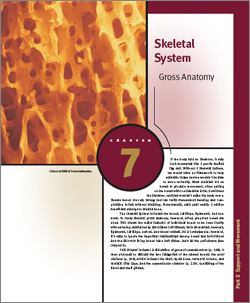
 | If the body had no skeleton, it may look somewhat like a poorly stuffed rag doll. Without a skeletal system, we would have no framework to help maintain shape and we wouldn’t be able to move normally. Most muscles act on bones to produce movement, often pulling on the bones with considerable force. So without the skeleton, muscles wouldn’t make the body move. Human bones are very strong and can resist tremendous bending and compression forces without breaking. Nonetheless, each year nearly 2 million Americans manage to break a bone. The skeletal system includes the bones, cartilage, ligaments, and tendons. To study skeletal gross anatomy, however, dried, prepared bones are used. This allows the major features of individual bones to be seen clearly without being obstructed by associated soft tissues, such as muscles, tendons, ligaments, cartilage, nerves, and blood vessels. As a consequence, however, it's easy to ignore the important relationships among bones and soft tissues and the fact that living bones have soft tissue, such as the periosteum (see chapter 6). This chapter includes a discussion of general considerations (p. 198). It then proceeds to discuss the two catagories of the named bones: the axial skeleton (p. 200), which includes the skull, hyoid bone, vertebral column, and thoracic (rib) cage, and the appendicular skeleton (p. 229), consisting of the limbs and their girdles. |